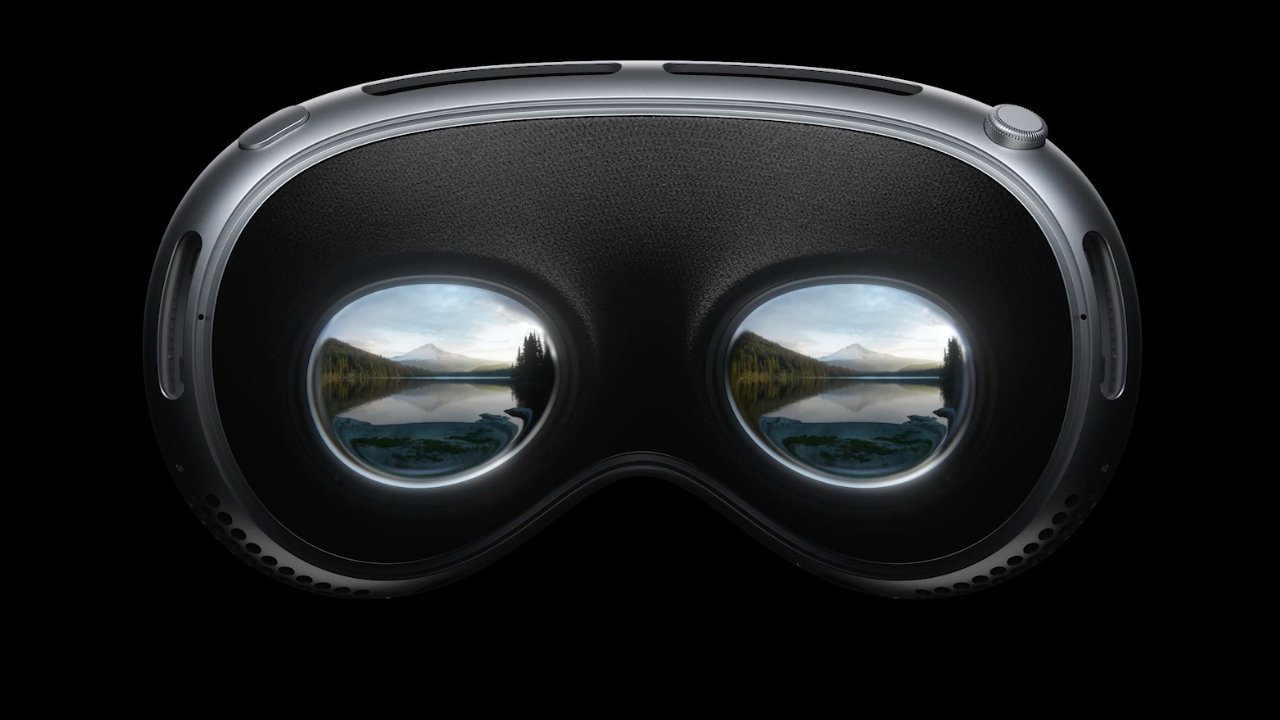Vision Pro prescription lenses to start at $300, guesses Gurman
With no apparent supply chain information, Bloomberg's Mark Gurman says that Apple Vision Pro's Zeiss prescription lenses will cost between $300 and $600.

Apple has already revealed that it is in partnership with Zeiss to produce vision-correction lenses for the Vision Pro, specifically for users who wear glasses. Pointing to the very long development of the new device, that partnership was originally reported back in 2017.
However, neither Apple nor Zeiss have yet announced pricing. It's unlikely that a company that sells $400 wheels for the Mac Pro, will make a low-cost Vision Pro accessory.
Zeiss already produces prescription lenses for use with other VR headsets, and they cost around $70.
Read on AppleInsider

Apple has already revealed that it is in partnership with Zeiss to produce vision-correction lenses for the Vision Pro, specifically for users who wear glasses. Pointing to the very long development of the new device, that partnership was originally reported back in 2017.
However, neither Apple nor Zeiss have yet announced pricing. It's unlikely that a company that sells $400 wheels for the Mac Pro, will make a low-cost Vision Pro accessory.
Seemingly based solely on that reasoning, and perhaps on how Zeiss lenses used to cost up to $200, Bloomberg's Mark Gurman is predicting a price range of at least $300-$600.I would guess that the Zeiss prescription lenses for the Vision Pro will be at least $300-600 a pair, unless Apple is eating part of the cost given the already high price of the headset itself.
-- Mark Gurman (@markgurman)
Zeiss already produces prescription lenses for use with other VR headsets, and they cost around $70.
Read on AppleInsider

Comments
Anyone know something about this?
- Gurnman is an idiot who didn't do any kind of market research before making this claim, and Apple will price them competitively.
- Apple is too stupid to have already read the market.
- Apple is doing the "Apple Thing" and supposing that people will pay extra just for the Apple name.
I'll provisionally go with the first.As the article says, Apple is a company that charges $400 for wheels; but they are also known for being sensitive to people with disabilities.
I am curious about how people who need corrective lenses will try them in an Apple store. Shirley they have thought about this - Tim wears spectacles on stage.
Instead of trying to magnify an already-grainy screen, use Dynamic Type to adjust the size of text.
https://www.computerworld.com/article/2490626/vision-correcting-display-nixes-your-need-for-eyeglasses.html
https://www.deepoptics.com/technology
I have normal distance vision, but because I've had cataract surgery I have zero near vision accommodation, i.e., no near vision focus at all without corrective eyeglasses. People with presbyopia, which is a large portion of the population of people over age 40, have limited near vision accommodation. This means that reading glasses, bifocals, or multifocal lenses are required to use a computer, read books, or to do detailed, up-close work like soldering. The magnification required is determined by the distance between the eyes and whatever your near vision is trying to focus on. Beyond a certain point however, when far-vision takes over, I don't need any eyeglasses at all. I can watch TV, use my 55" 4K TV as a monitor, drive, engage in sports, pass the legal vision requirements for an unrestricted drivers license, etc., again, without corrective lenses.
I guess what I'm asking is: do the images presented by the Apple Vision Pro use near vision where you are essentially looking at the surface of a virtual screen that is at a fixed distance from your eyes? If that's the case simple reading glass lenses would suffice.
Correction: I don't have monovision. I have single, distance-only vision. The "mono" term always confuses me because monovision is the combination of both near and distance vision by having a near vision lens in one eye and a distance vision lens in the other eye, hoping the brain will sort things out, which it typically does, but often with degradation of depth perception.
There's been a lot of speculation that the Apple Vision Pro (AVP) may not be for everyone do to price concerns. This is a reasonable and fully understood all of the way up the chain in Apple. But I think there may also be a segment of prospective buyers who really want the device but have subtle or substantial vision and/or sensory anomalies that prohibit them from using the device. I have subtle vision anomalies in both eyes, more so in the one that required retinal surgery. I also get nauseous playing FPS games, even the ancient ones like Castle Wolfenstein. No issues with motion sickness or seasickness. I know that Apple has specifically addressed what they believe to be the root cause of nausea with the AVP, but their interpretation may not apply universally. This means that buying an AVP is going to involve not only individual fitting for head shape but also a period of adjustment to see how individuals personally adapt to a vastly new way of interacting with a computer.